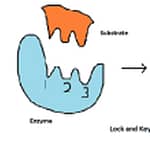In the post-pandemic world, business leaders need to focus on employee health and happiness, especially on mental health and long-term wellbeing in order to maintain a productive and thriving workplace collective. But while the majority of businesses focus on individual perks and changes to their workplace, you want to take a comprehensive approach to employee wellbeing.
Why? Because your goal should be to address all their needs in the new normal and discover what it is that really makes a difference over the long term. One of the things you might not have considered is technology. Specifically, how using CRM (customer relationship management) software can help your teams thrive, not just by delivering better results, but by becoming happier, more engaged, and more productive.
CRM is just one of the tools you can use, but it is an essential one that every small business needs nowadays. Now, let’s put that into perspective and talk about the ways in which a good CRM implementation can bring numerous internal benefits to your employee collective.
CRM can enhance onboarding
While many business leaders think of CRM software as a tool to boost your existing processes and employee experience, you should also consider how CRM can boost onboarding as a whole. For new hires, transparency and having access to as much valuable data as possible is crucial.
If you want them to become productive team members quickly, then you need to complement your onboarding process with CRM onboarding. CRM onboarding allows new hires access to important customer data, workflows, schedules, account details, teams and team members, and much more – all of which is important for data they can use to internalise your processes.
Your CRM software will also be instrumental in getting new hires involved in internal team collaboration as well as cross-department collaboration.
CRm for CPD
A comprehensive CRM system can be a treasure trove of valuable data. That’s not just data about your customers that your teams can use to improve their service and campaigns – it’s also data they can use to improve their internal team processes. By improving their internal and customer-facing processes, they’ll be able to continuously achieve better results.
And a big part of this comes down to continuous professional development (CPD), which you can facilitate through your CRM platform. Analysing the customer data within, but also the workflows, communication, and collaboration between teams, managers can identify the common pain-points and the opportunities for improvement.
You can then craft actionable plans and strategies for continuous professional development for different team members, and personalise the strategies to their position and role in the company.
CRM for honest and regular employee feedback
CRM is a crucial tool for many internal company processes, and that includes empowering and gathering employee feedback. Team leads and business leaders need to incentivise their employees to share their experience in the workplace, and provide honest feedback on a regular basis. Why? Because only with the right and timely feedback can you hope to improve your internal processes and make the lives of your employees easier, and their days more productive.
Your CRM can be the perfect tool to achieve these goals. Because of its reporting capabilities, a good CRM tool can have robust feedback functions and forms that you can optimise for your needs. These can be end-of-shift feedback forms or mental health check-ins, and you can set them to be anonymous if you want to further incentivise your employees to provide honest feedback to the higher-ups.
CRM for corporate wellness and Employee needs
Before we move into the benefits of using CRM software for workplace performance and collaboration, let’s talk about the importance of assessing corporate wellness in the modern workplace and what it means to meet the needs of your employees. It’s important to keep in mind that the needs of the modern workforce are always evolving, so your wellness programs need to evolve as well.
That said, the pandemic has drastically sped up this process, forcing the needs of the employees to change rapidly. What this means for you is that you need to invest in analysing your workplace, culture, happiness, and the factors that affect engagement and productivity in your organisation.
If you are still running a remote or a semi-remote operation, you might find that your employees are struggling with communication bottlenecks, department silos, and menial, repetitive tasks that are ruining their productivity and zeal. This is where good CRM can come in to save the day.
crm for better performance
At the heart of every decent CRM tool is process automation. While CRMs are not just automation tools, the technology lends itself to business-wide automation by delegating small, repetitive, and even some complex tasks to automated systems.
There is no denying that marketing automation is a great way to save time and money on customer acquisition and retention, but it can also be a great way to build happier and healthier employees. CRM tools can automate or at least partly automate many tasks in your organisation, including:
- Appointment scheduling
- Follow-up campaigns
- Welcome emails and thank-you messages
- Contact management in the pipeline
- Lead scoring
- Asking for feedback and rating
- Collecting payments and payment reminders
The more you automate internally and externally with your CRM, the less time your employees need to spend on menial tasks, or even on resolving some complex issues manually. They can then focus on the tasks that can’t be automated, without feeling overwhelmed by their workload.
CRM automation is a way to achieve your sales, marketing, and support goals faster and without wasting money, but it’s also a way to enhance communication and collaboration in the workplace. Automate as much as you can, and you will also positively affect your employees’ mental health in the process.
crm for building better workplace culture
Building a workplace culture is one of the pillars of a successful employee collective, one that can have numerous long-term benefits when it comes to employee engagement, productivity, and zeal. A good workplace culture can improve performance across the board and boost employee retention in the new normal.
One of your key goals, in fact, should be to improve retention now that employees are looking for stable opportunities as well as employers that can provide a healthy place to work. Now, there are many ways to build a company culture, including:
- Defining an ideal culture
- Setting company values and key pillars
- Encouraging employee feedback
- Hosting workshops and seminars
- Encouraging work-life balance
- Defining employee perks and key benefits
- Ensuring accountability, trust, and transparency in the workplace
- Giving employees autonomy
- Encouraging communication and collaboration
Now, one of the key elements here is also technology, which leaders often overlook. By providing your employees with a feature-rich CRM system, you can empower them to collaborate better and communicate with ease, but also ensure accountability and trust through monitoring and reporting.
crm with other digital transformaiton tools
CRM software should be one part of your overarching digital transformation strategy. It’s important to keep in mind that the more smart tech solutions you invest in, the happier your employees will be. The emphasis here should be on the word smart, because using too many tools that they don’t actually need can boost stress, time and financial waste, and make their jobs harder.
If you want to complement your CRM tool, you should consider only one or two new software solutions. For example, when deciding whether to go for CRM or customer success software, you need to consider your OKRs (objectives and key results), goals, and the needs of your sales, support, and marketing teams.
Customer success software is focused more on engagement and lifecycle management, while CRM is focused more on lead generation and customer retention. But you also have to consider what will bring the most benefit to your teams.
Take the time to analyse their needs when you’re considering adding any tool into the mix, and keep in mind that a comprehensive CRM tool will often replace several independent tools.
crm for better cross-department workflows
One of the more direct ways CRM software can build employee happiness and productivity is through better workflow management. A good CRM tool will allow you to set tasks and manage projects with a comprehensive overview of all teams, customers in the systems, objectives, KPIs, and crucial internal and external data.
Think of what that means for the wellbeing and productivity of your workforce. Sales experts can work seamlessly with marketers and your support staff to personalise their approach to every lead, manage the sales funnel seamlessly, and most importantly, avoid making mistakes.
In practice, this alleviates a lot of the stress that these teams go through when managing the pipeline manually. With a CRM software, these teams can follow a structured workflow and stay productive, efficient, and above all, accurate in their execution of marketing, sales, and support tasks.
Crm for accountability, trust, and collaboration
Modern businesses are encountering some very unique challenges in the new normal. Now that companies are operating on a remote work model or a hybrid one, ensuring trust, accountability, and effective collaboration can be a demanding task.
Fortunately, CRM software can help mitigate some of these issues through effective reporting, project and customer monitoring, data storage and communication logs, and more. Everything you feed into your CRM system is stored and your employees can access crucial data easily.
When it comes to ensuring accountability, which is an important part of workplace culture and overall happiness, a CRM can help you keep eveyrthign logged and all information stored safely on the platform. This means that everyone, including the upper management, will always have a way to resolve workplace misunderstandings or disputes by having access to a clear communication track record.
CRM can also help build trust between teams through better collaboration and accountability, as it allows individual team members to stay on top of all projects and tasks, monitor customer-specific tasks and objectives, and more. This kind of collaboration reduces stress and most importantly, it helps defeat department silos in remote teams.
crm to improve, not replace strategic collaboration
Even though you can use your CRM to automate many processes and make collaboration easier, that doesn’t mean that it should replace your one-on-one interactions or strategic sessions with your teams. CRM is great for automating repetitive processes and for facilitating seamless collaboration between teams in the digital realm, but when it comes to strategy, planning, and decision-making, you need to combine it with the tried-and-tested methods.
So, be smart with how you implement and use your CRM. Remember that a CRM, like many other tools, is there to help you lead a more efficient and effective workforce – not to replace you, your team leads, or automate vital processes and interactions.
With that in mind, you can use your CRM to reduce the number of meetings on a daily basis, structure and relay important information across teams, and boost collaboration across the board. This will allow you to allocate resources towards:
- Better daily planning and workflow management
- More productive meetings
- Strategic sessions
- Better decision-making
- Relevant group and one-on-one interactions with your teams
crm to boost organisational communication
Tying directly into the story of collaboration and department silos is the fact that CRM helps teams communicate more efficiently both internally and externally. CRM tools usually have internal communication software that allows teams to communicate in real time, but also to communicate directly on tasks and projects by attaching notes and messages.
Complemented by a good communication hierarchy, in which everyone knows how to use the right communication lanes, a CRM tool can eliminate communication bottlenecks and keep all projects and tasks moving forward. Externally, on the other hand, CRM allows you to maintain efficient and effective communication with your customers.
This helps your sales, marketing, and support staff to stay on top of their leads, close deals faser, and open new cross-sell and upsell opportunities.
Over to you
Businesses primarily use CRM software to boost customer acquisition and retention, and while that is its main purpose, it’s important that we recognise the benefits it can bring to your employees. When used right, good CRM software can boost everything from your internal communication and collaboration to your company’s culture and beyond.
Make sure to start using CRM for more than just sales and marketing, and leverage the technology to build engaged and productive teams in 2022 and beyond.
Author: Nina Petrov – Founder, Coffee Bean Digital (advertising services)
Photo credit: Stephen Dawson on Unsplash




